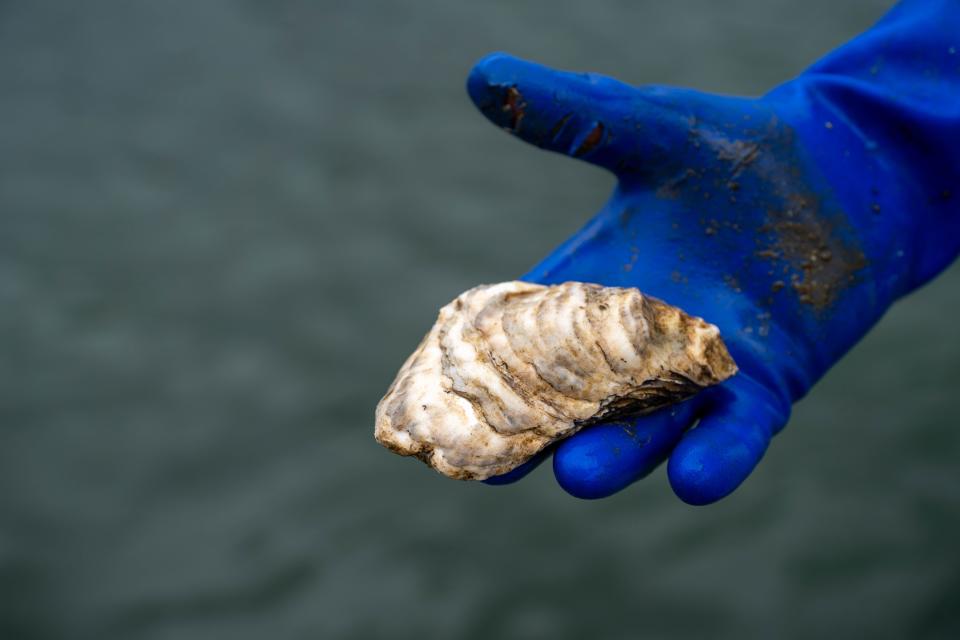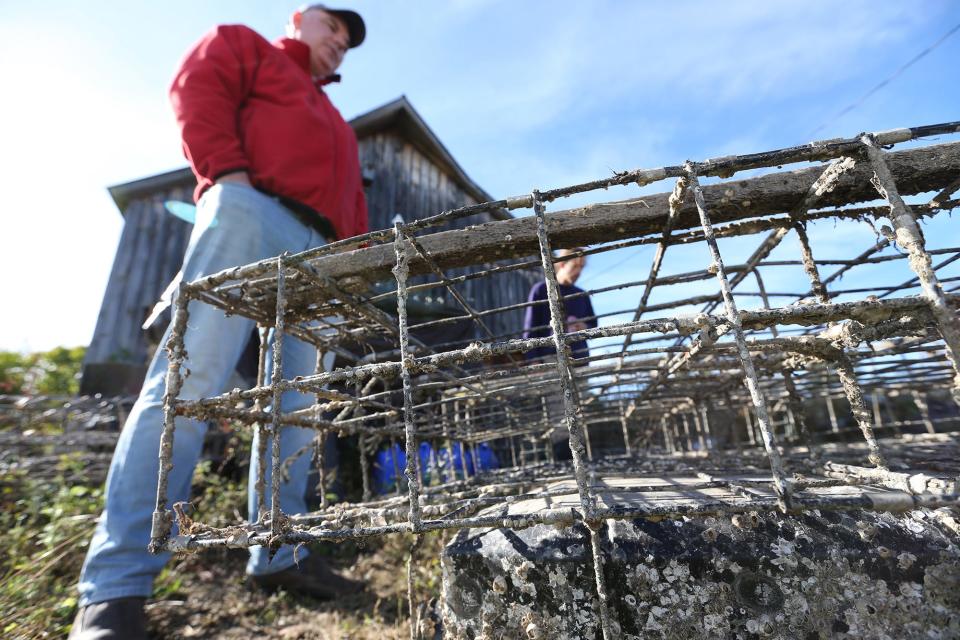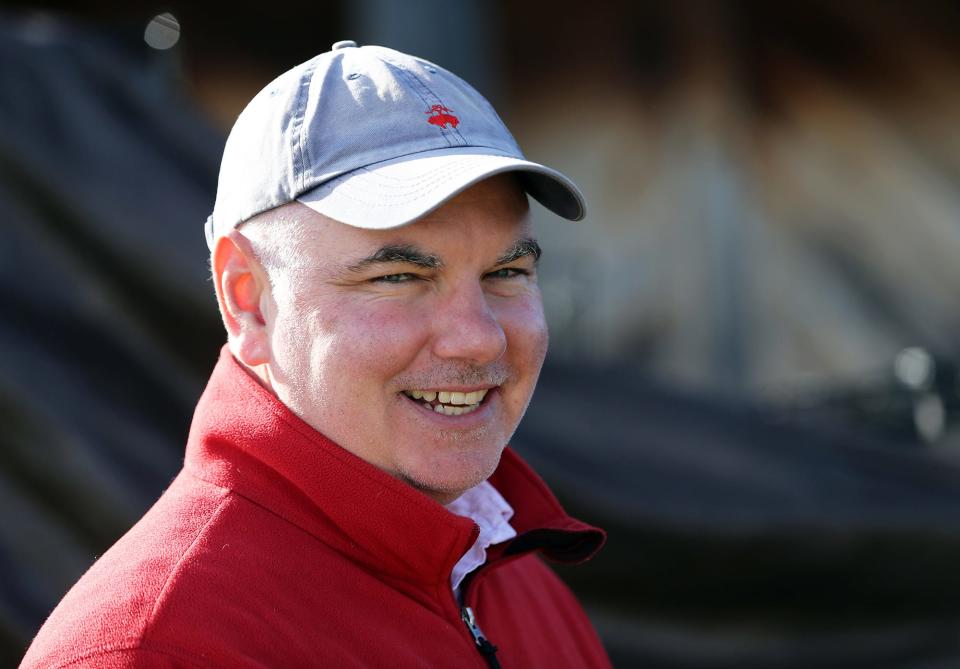What it takes to start an oyster farm in Dover: Harvest after tough times 'worth the wait'
DOVER — After years of setbacks, New England Superior Oyster is operating full-speed ahead, farming and harvesting large oysters on the banks of the Bellamy River.
For the last seven years, more than 50,000 oysters have been growing in the harbor of Royalls Cove where Bellamy River joins lower Little Bay, near Scammell Bridge on Route 4.
After overcoming significant challenges, the company is enjoying a plentiful harvest this year, allowing the oysters to mature into large oysters with deep cups.
Sheyne Branconnier, one of the owners of New England Superior Oyster, said the work is a worthwhile “labor of love.” Branconnier recently said they started harvesting in September, yielding nearly 1,000 oysters so far.

The company has faced a series of setbacks, dating back to 2016, when it first had difficulties obtaining a commercial license to operate an oyster farm due to opposition from nearby residents who feared the site would impede recreational traffic and diminish scenic views. After the owners obtained permits, the coronavirus pandemic and further legal processes created new challenges. With that behind the company now, it's time to start harvesting.
The business is owned by Branconnier, Troy Payne and Cleo Huggins. This is the first year they brought on a resident oyster farmer to help with the hard labor of harvesting and maintenance of the equipment and farm.
What is oyster farming?
Oyster farming is an aquaculture practice in which oysters are bred and raised in a contained area to be harvested for food. Branconnier said the oysters are kept in plastic mesh bags inside large cages that are sunk and suspended several inches above the river bed, with a floating buoy on the surface.
When New England Superior Oyster gets young oysters, they could fit 150,000 into a liter container. As they grow inside the cases, they are spread out to fill more than a dozen cages. Oysters take two to three years to mature.

“If you were to ask people of the state, 'would you like to have oysters in your waters?,' people unanimously say 'yes.' Some are hesitant to have them in their own backyard,” Branconnier said. "We need the oysters in our waters. They aren't just there to eat, they help to restore the ecosystem."
The company has a specialized boat to lift the cages out of the water, so the bags of oysters can be sorted into those that stay to grow more and those ready to consume. It’s a four- to six-hour endeavor, since each cage can hold more than 1,000 oysters.
Another area industry:Here are 6 Seacoast restaurants on Yelp's top 100 in New England (and the whole list)
“Oysters are fun and it is something that brings people together,” Branconnier said. “People are happy eating them, and there is a sense of uniting the community through locally sourced food.”
The benefits of oyster farming
The oyster farm isn’t just about the harvest or profits, it’s about conservation, Branconnier said.
“Oysters do a lot to promote conservation and the health of the Great Bay. They remove suspended sediment and chlorophyll in the water,” Branconnier said. “That is important because when chlorophyll blooms happen, it blocks the sun, which hinders the growth of eelgrass. Eelgrass is like a nursery for a lot of marine life. Without it, the whole ecosystem collapses. That’s a large reason why there is a push for more shellfish in coastal areas.”

Branconnier said since the company started oyster farming in this area, there has been a “healthy amount” of eelgrass growth in what had become a “dead zone.”
“This is mostly a mud flat out here, but with oyster restoration and farming, it’s changing,” Branconnier said. “It’s being rejuvenated. You see more fish activity near the oysters. It’s beautiful to see.”
The owners hope the oyster farm can help meet a demand in the market for local seafood, while playing a part in maintaining the health of the Great Bay estuary and the communities it affects. He says it's a win-win.
Bellyman’s Oysters
According to Dover Public Library archives, the origin of the Bellamy River's name is unclear and there are several stories behind it. One prevailing tale is it comes from a story of an Indigenous man who had a cornfield here in the 1640s. He was nicknamed the “Belly-man” due to his weight. In homage to that story, the oysters currently being farmed here will be known as “Bellyman’s Oysters” because of the deep curvature in the cups, Branconnier said.
“What sets these apart is the consistency of size and shape,” Branconnier said. "They're well worth the wait."
The oysters farmed at this Dover location will be available by ordering online at nhgreatbayoysters.com and picking up at the farm.
This article originally appeared on Fosters Daily Democrat: New England Superior Oyster of Dover NH sees long-awaited success

